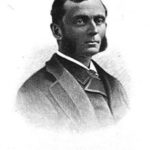The rest cure was probably the most fashionable of responses to a condition of “nerves” or neurasthenia (see last three posts). Only the wealthy could afford such a complete withdrawal from obligations or work, let alone take on the obvious expenses of accommodations and treatment involved in the cure. Women took the treatment in disproportional numbers from men, but may have been kept out of asylums with its help. Even though some patients deplored this cure, surely it was better for both reputation and psyche than a stay in a madhouse.
Dr. S. Weir Mitchell was the leading authority on treatment through the rest cure, and was highly influential in popularizing it during the late 1800s. The rest cure worked in two ways: like a stay in an asylum, the rest cure took patients out of their homes and isolated them from whatever atmosphere, people, or situation had caused the problem; the cure secondarily worked on their body and mind by keeping patients at rest in a pleasant, cheerful environment.
Patients were literally forced to rest in a bed for six to eight weeks; massage and electrical stimulation helped keep their muscles toned during the enforced inactivity. Patients were washed by nurses, who also fed them a milk-based diet; milk alone might be given for the first week, or raw eggs if a patient couldn’t tolerate milk. Feeding was nearly continuous, and patients could be force-fed if they would not voluntarily down the quantities the staff tried to give them. Sometimes patients were not allowed to read, talk, or enjoy even the most minimally physical amusements. This probably separated the patient who merely wanted a change of pace or sanctioned escape from an unpleasant household situation from patients who truly needed care.

Dr. Mitchell at the Infirmary for Nervous Diseases, Philadelphia, 1902, courtesy National Library of Medicine








I’m so glad you’re finding my blog interesting! Yes, I’ve completed a book on the Canton asylum, which is under review with a university press. No one is more anxious to have it in print than me, but I’m afraid that even under the best of circumstances it will still be a while before it would ever be released. I hope you’ll keep checking in every now and then, because I’ll be sure to announce its publication date whenever that becomes a reality.
Hi Carla,
Wanted to tell you haw amazing and intriguing your writing is. I am given to understand you have written a book on Canton. I checked amazon with no luck. Is there a book available? If so, how may I purchase it?
Thanks so much!
Cheryl